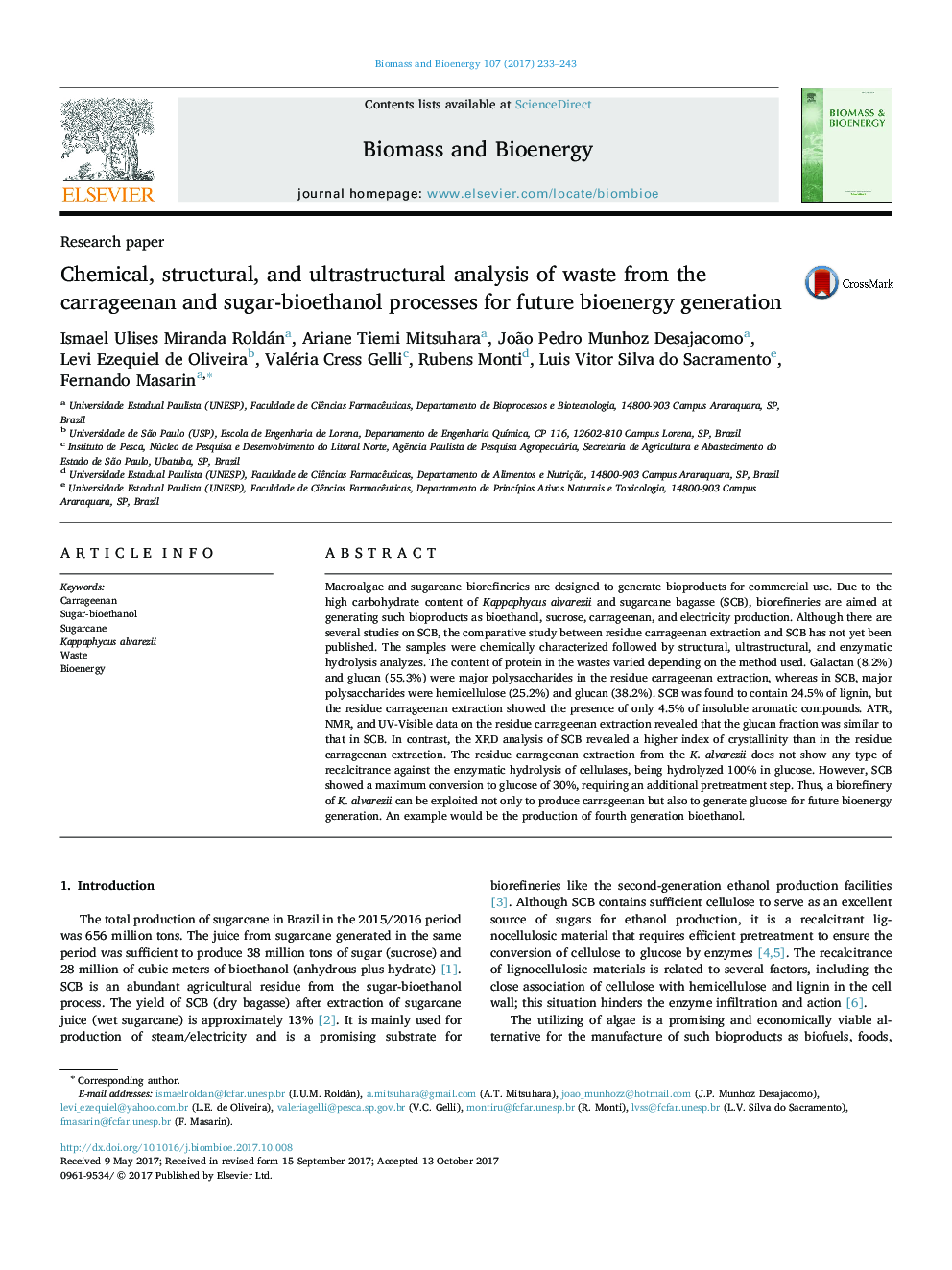| کد مقاله | کد نشریه | سال انتشار | مقاله انگلیسی | نسخه تمام متن |
|---|---|---|---|---|
| 7063098 | 1459786 | 2017 | 11 صفحه PDF | دانلود رایگان |
عنوان انگلیسی مقاله ISI
Chemical, structural, and ultrastructural analysis of waste from the carrageenan and sugar-bioethanol processes for future bioenergy generation
ترجمه فارسی عنوان
تجزیه و تحلیل شیمیایی، ساختاری و فوق ساختار زباله از فرآیندهای کاراژین و فرآورده های شکر-بیواتانول برای تولید انرژی زیستی آینده
دانلود مقاله + سفارش ترجمه
دانلود مقاله ISI انگلیسی
رایگان برای ایرانیان
کلمات کلیدی
موضوعات مرتبط
مهندسی و علوم پایه
مهندسی شیمی
تکنولوژی و شیمی فرآیندی
چکیده انگلیسی
Macroalgae and sugarcane biorefineries are designed to generate bioproducts for commercial use. Due to the high carbohydrate content of Kappaphycus alvarezii and sugarcane bagasse (SCB), biorefineries are aimed at generating such bioproducts as bioethanol, sucrose, carrageenan, and electricity production. Although there are several studies on SCB, the comparative study between residue carrageenan extraction and SCB has not yet been published. The samples were chemically characterized followed by structural, ultrastructural, and enzymatic hydrolysis analyzes. The content of protein in the wastes varied depending on the method used. Galactan (8.2%) and glucan (55.3%) were major polysaccharides in the residue carrageenan extraction, whereas in SCB, major polysaccharides were hemicellulose (25.2%) and glucan (38.2%). SCB was found to contain 24.5% of lignin, but the residue carrageenan extraction showed the presence of only 4.5% of insoluble aromatic compounds. ATR, NMR, and UV-Visible data on the residue carrageenan extraction revealed that the glucan fraction was similar to that in SCB. In contrast, the XRD analysis of SCB revealed a higher index of crystallinity than in the residue carrageenan extraction. The residue carrageenan extraction from the K. alvarezii does not show any type of recalcitrance against the enzymatic hydrolysis of cellulases, being hydrolyzed 100% in glucose. However, SCB showed a maximum conversion to glucose of 30%, requiring an additional pretreatment step. Thus, a biorefinery of K. alvarezii can be exploited not only to produce carrageenan but also to generate glucose for future bioenergy generation. An example would be the production of fourth generation bioethanol.
ناشر
Database: Elsevier - ScienceDirect (ساینس دایرکت)
Journal: Biomass and Bioenergy - Volume 107, December 2017, Pages 233-243
Journal: Biomass and Bioenergy - Volume 107, December 2017, Pages 233-243
نویسندگان
Ismael Ulises Miranda Roldán, Ariane Tiemi Mitsuhara, João Pedro Munhoz Desajacomo, Levi Ezequiel de Oliveira, Valéria Cress Gelli, Rubens Monti, Luis Vitor Silva do Sacramento, Fernando Masarin,
